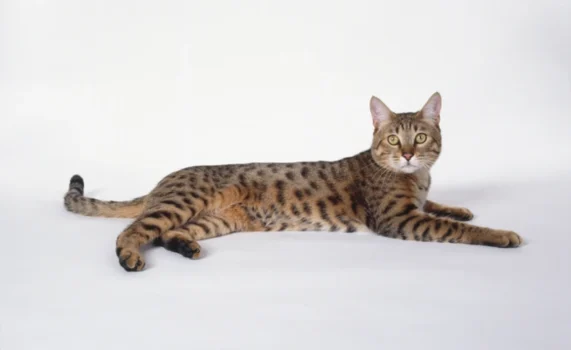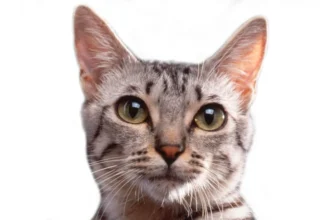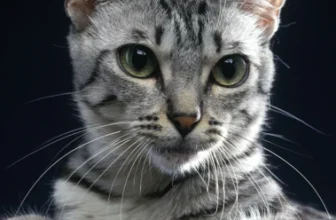As the popularity of California Spangled Cats continues to grow, so does the demand for responsible breeding practices. But what exactly does it mean to be a responsible breeder? And how can breeders ensure they are providing the best possible care for their animals? In this article, we will explore the ins and outs of responsible breeding practices for California Spangled Cats, covering everything from preparing for breeding to marketing and selling kittens. So, if you’re a breeder or simply interested in the topic, keep reading to discover how to maintain a high standard of care for your feline friends.
What is Responsible Breeding?
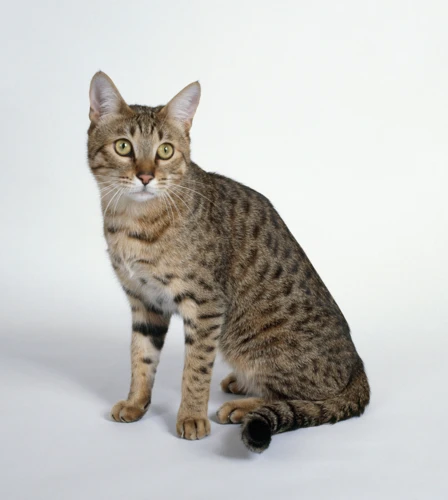
Breeding cats can be a rewarding and fulfilling experience, but it’s essential to practice responsible breeding to safeguard the health of the cats and the breed’s future. Responsible breeding practices involve making informed decisions throughout the breeding process to ensure that the cats have desirable traits and characteristics without risking genetic disorders. In this section, we will take a closer look at the concept of responsible breeding, its benefits, and the consequences of irresponsible breeding. It’s crucial to understand why responsible breeding practices are essential, especially in breeding California Spangled cats, which have a unique set of genetic traits and potential health issues. For more information on California Spangled cat genetics, pedigree, traits, health testing, and inbreeding, please follow the links to relevant articles.
Benefits of Responsible Breeding
Responsible breeding is essential for the continued health and well-being of California Spangled Cats, and it comes with many benefits. Let’s take a look at some of the advantages of responsible breeding:
- Improved Health: By being intentional about which cats are bred together, responsible breeders can greatly reduce the risk of genetic disorders and health problems in their kittens. Regular health testing and screening can also catch potential issues early, allowing breeders to make informed decisions about breeding pairs and ultimately produce healthier kittens. Genetic testing can help determine if either parent is a carrier of a certain trait or predisposition for conditions such as hypertrophic cardiomyopathy (HCM).
- Stronger Pedigrees: A strong pedigree is a valuable asset for any breeder, and responsible breeding can help build pedigrees that are free of common genetic problems and showcase the desirable traits of the breed. By keeping detailed records and carefully selecting breeding pairs, responsible breeders can create pedigrees that show the cats’ lineage in the context of the breed standard.
- Avoidance of Overbreeding: Responsible breeding practices help prevent overbreeding, which is a common problem in the pet breeding industry. By only breeding cats that meet certain standards and have been properly screened and tested, breeders can ensure that they aren’t producing too many kittens or contributing to overpopulation.
- Positive Impact on the Breed: By being selective about which cats they breed, responsible breeders can help improve the overall quality and characteristics of the breed. For example, if breeders want to improve the coat pattern of California Spangled Cats, they can selectively breed cats with better stripes and spots. When breeders work towards a common goal, the entire breed benefits.
In contrast, genetic disorders and inbreeding caused by irresponsible breeding practices can lead to serious health problems in kittens. For example, inbreeding can increase the risk of genetic disorders, behavioral problems, and a weakened immune system. Thus, responsible breeding is crucial for producing healthy and happy California Spangled Cats.
Consequences of Irresponsible Breeding
Irresponsible breeding practices can have severe consequences not only for the individual cat but also for the breed as a whole. The following are some of the outcomes that can result from irresponsible breeding practices:
- Genetic disorders: Irresponsible breeding can result in genetic disorders being passed down from one generation to another. These disorders can manifest themselves in various ways including deformities, chronic illnesses, and physical and mental disabilities. Cats that are diagnosed with these conditions often require extensive medical attention and care, leading to a significant expense for their owners.
- Inbreeding impact: Inbreeding is a common problem in irresponsible breeding practices. Inbreeding can exacerbate existing genetic disorders and create new ones. Inbreeding can also result in a weaker immune system, making cats more prone to inherent health problems. As a result of inbreeding, the gene pool becomes narrower, and the breed’s genetic diversity decreases. This can lead to decreased fertility, increased susceptibility to diseases, and decreased overall health.
- Breeding traits: Irresponsible breeders often prioritize aesthetics over health, leading to a monoculture of cats with exaggerated physical characteristics. These traits might be desirable in terms of appearance, but they can lead to severe health problems, such as breathing difficulties, joint problems, and dental problems. Irresponsible breeders may prioritize rareness or novelty traits which can lead to cats with overly exaggerated features that can cause severe health problems.
It is vital that breeders prioritize their cats’ health and welfare over personal gain to ensure they produce healthy and happy cats for customers. Breeding purebred cats is not just about creating cats that meet certain physical standards; it’s about preserving the breed’s health and unique qualities for future generations. By preventing irresponsible breeding practices and prioritizing responsible breeding practices, breeders can ensure that the California Spangled Cat population remains healthy and thriving for years to come.
Preparing for Breeding

Before going on with the breeding process of California Spangled cats, it is important for breeders to prepare themselves and their cats. Proper preparation can help ensure that breeding is done responsibly and results in happy, healthy kittens. Breeding California Spangled cats also requires more than just putting two cats together. Responsible breeding starts with health testing and screening, choosing suitable mating partners, and proper nutrition and exercise, and more. Let’s take a closer look at each of these crucial steps to prepare for breeding California Spangled cats.
Health Testing and Screening
Responsible breeding practices for California Spangled cats begin with proper health testing and screening measures. Before breeding, it is essential to ensure that both the male and female cats are healthy and free from genetic disorders that can be passed on to their offspring. This process involves thorough screening and testing, including blood tests, genetic testing, and physical examinations.
Health testing and screening results should be documented and made easily accessible to potential buyers, ensuring transparency and trust between breeders and buyers.
Below is a table that outlines some of the recommended health tests and screenings for California Spangled cats before breeding:
| Health Test/Screening | Description |
| ——————————| ——————————————————-|
| Blood Tests | Test for feline leukemia virus, feline immunodeficiency virus, and other blood-borne diseases. |
| Genetic Testing | Check for genetic disorders such as PKD, PRA, and MPS. |
| Physical Examination | Comprehensive examination to evaluate overall health |
| Hip Dysplasia Evaluation | To ensure that breeding cats do not pass on hip dysplasia. |
| Eye Exam | To detect any eye abnormalities or diseases. |
It is important to note that not all genetic disorders can be detected through screening, and sometimes, carriers of a specific disease may not show any symptoms. However, regular screening can significantly reduce the prevalence of genetic disorders in a breed.
By ensuring that both the male and female cats are healthy and free from genetic disorders, breeders can produce healthy and robust kittens that are free from preventable diseases.
For more information on California Spangled cat genetic disorders, please see our article here.
Choosing Suitable Mating Partners
When it comes to choosing suitable mating partners for California Spangled Cats, it’s important to keep several factors in mind. Not all cats are meant to be bred together and careful consideration should be taken before choosing a mate. Here are several aspects responsible breeders should consider when selecting suitable mates for their cats:
1. Genetics: Before selecting a mate, it’s important to consider the genetics of both parent cats. Responsible breeders should avoid inbreeding since it can result in genetic defects and health issues. Inbreeding can also lead to a decrease in genetic diversity, which can impact the breed’s overall health and longevity. As we’ve mentioned in the article about inbreeding impacts, this is a crucial aspect of responsible breeding that should not be overlooked.
2. Physical Traits: Physical traits, such as the cat’s size, coat color, and patterns, are important to take into account when selecting a mate. Breeding two cats with similar physical traits can help maintain the breed standard, but it’s important to avoid exaggerating certain features. Exaggerated physical features can result in health issues and discomfort for the cat.
3. Temperament: A cat’s temperament can greatly affect its offspring. It’s important to select a mate with a similar temperament to ensure that the kittens will have a predictable and desirable personality. Friendly and social cats make great companions, and it’s important to breed cats with these traits to ensure that the kittens will have similar temperaments.
4. Health: Responsible breeders should ensure that both parent cats are in good health before breeding. Any health issues or genetic disorders should be addressed before breeding to avoid passing on these issues to the kittens. This is why health testing and screening is so crucial and why we’ve included it as a separate heading.
5. Pedigree: Pedigree can also be an important factor to consider when selecting a mate. Studying a cat’s pedigree can help determine whether it’s a good match genetically and physically. Pedigree can also help breeders avoid breeding cats that are too closely related.
By considering these factors when selecting a suitable mate, responsible breeders can help ensure that their cats and their kittens are healthy, happy, and well-adjusted. These measures also help maintain the high standards of the California Spangled Cat breed and its unique breeding traits.
Proper Nutrition and Exercise
To ensure that your California Spangled Cats have the best chance of producing healthy kittens, it’s important to provide them with proper nutrition and exercise. A healthy diet will provide your cats with the nutrients they need to maintain their health and support the growth and development of their offspring. Additionally, exercise will help keep your cats in shape and improve their overall well-being.
Nutrition:
One of the most important factors in ensuring the health of your breeding cats is their diet. A well-balanced diet should include high-quality proteins, fats, and carbohydrates, as well as vitamins and minerals. Consult with your veterinarian to determine the best diet for your cats based on their age, weight, and overall health. When choosing food, look for brands that use high-quality ingredients and avoid fillers, artificial preservatives, and by-products.
Exercise:
Regular exercise is essential for the health of your cats. Keep your cats active by providing them with toys and climbing structures. Encourage play and exercise by setting aside time each day to play with your cats. This will not only help them stay in shape but will also help to reduce stress and anxiety.
Hydration:
Don’t forget the importance of hydration in maintaining your cat’s health. Make sure to provide fresh, clean water at all times, and consider moistening your cat’s food to ensure they stay properly hydrated.
Providing your California Spangled Cats with proper nutrition and exercise is key to maintaining their health and producing healthy kittens. Consult with your veterinarian to develop a diet and exercise plan specific to your cats’ needs.
During the Breeding Process
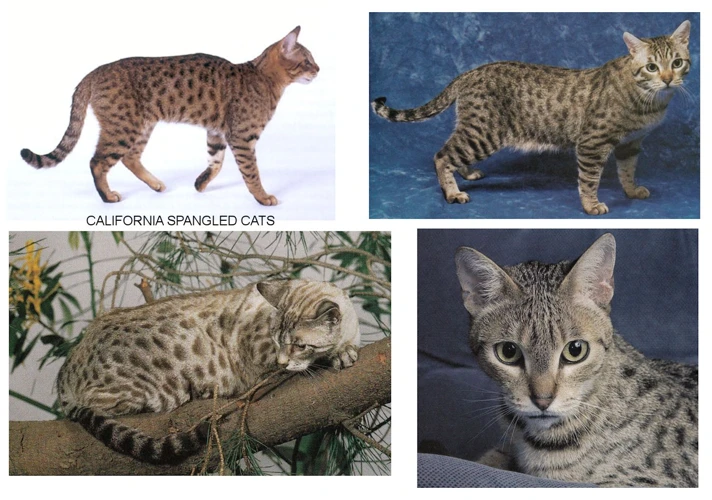
Breeding cats can be a complex process that involves careful management and oversight. During this time, breeders must pay close attention to the health and wellbeing of both the female and male cats. Fertility, breeding methods, and contingency planning are all important factors that should be taken into consideration. In this section, we will explore the key issues surrounding the breeding process and provide tips and guidelines for responsible breeding practices that will ensure healthy and happy litters.
Natural Mating vs. Artificial Insemination
When it comes to breeding California Spangled Cats, there are two options to consider – natural mating and artificial insemination. Both methods have their advantages and disadvantages.
Natural Mating refers to the process of allowing male and female cats to mate naturally without any intervention. This is the traditional method of breeding and is a natural way of reproduction. The advantage of natural mating is that cats are able to mate in their most natural state, which can lead to successful breeding outcomes. The process is relatively low-cost and does not require any special equipment. Natural mating can lead to improved health of the cats as it promotes natural selection and genetic diversity.
However, there are certain disadvantages of natural mating. It can be difficult to manage and supervise the cats during mating, which can sometimes lead to aggressive behavior and injuries. There is always a risk of transmitting diseases and infections between the cats. There is also a risk of unwanted pregnancies and increase in feline population.
Artificial Insemination is a process where the sperm is collected from the male cat and then injected into the female cat’s reproductive tract using a syringe or catheter. The advantage of artificial insemination is that it allows breeders to control and manage the breeding process easily. It eliminates the need for multiple mating partners and also reduces the risk of diseases and injuries. Additionally, this method is useful for cats that have difficulty mating naturally due to physical or behavioral problems.
However, artificial insemination is a complex and expensive process that requires the use of specialized equipment and professional expertise. Breeders must also ensure that they use high-quality sperm from genetically healthy males, which can add to the cost.
Comparison Table:
| Factor | Natural Mating | Artificial Insemination |
|---|---|---|
| Cost | Low | High |
| Risk of Injury and Disease Transmission | High | Low |
| Success Rate | Variable | High |
| Control over the Breeding Process | Low | High |
| Genetic Diversity | High | Variable |
Both natural mating and artificial insemination have their own unique advantages and disadvantages. Choosing the appropriate method depends on the specific needs and situation of the breeder. Regardless of the method chosen, it is important to ensure that the cats are in optimal health and that the breeding process is closely monitored and supervised.
Monitoring and Supervision
Once the breeding process begins, monitoring and supervision are crucial to ensuring that everything goes smoothly. Regular vet checkups should be scheduled throughout the pregnancy to ensure that the pregnant cat and developing kittens are in good health. The breeder should also keep a close eye on the mother cat’s behavior and physical state, looking out for any signs of discomfort or complications.
Additionally, it’s important to supervise the kittens after they are born. The breeder should make sure that each kitten is nursing properly and getting enough food. If a kitten is not gaining weight or is struggling to nurse, the breeder may need to intervene by providing supplemental feedings or taking the kitten to the vet.
Keeping detailed records of the health, behavior, and growth of the mother cat and kittens is also necessary during this stage. These records can help the breeder track the development of the kittens and identify any potential issues that may arise.
The breeder should be prepared for any emergencies that may arise during the breeding process. This means having easy access to emergency veterinary care as well as any necessary supplies such as heating pads or formula for the kittens.
Monitoring and supervision are critical to ensuring the health and well-being of both the mother cat and her kittens during the breeding process. Regular checkups, close observation, and detailed record keeping are all important practices for responsible breeding.
Contingency Planning
Contingency planning is an essential part of responsible breeding as unforeseen circumstances can arise during the breeding process. It’s important to have a plan in place to ensure the safety and health of the breeding cats and their offspring. Here are some steps to follow when creating a contingency plan:
Evaluate Potential Risks: Identify potential risks that may arise during the breeding process such as complications during mating or pregnancy, illness or injury of the cats, or unexpected costs.
Create a Plan for Each Scenario: Develop a plan for each potential risk, including procedures to follow in the event of an emergency. This may include contacting a veterinarian, arranging for transportation to a veterinary clinic, or isolating a sick or injured cat.
Establish Emergency Contacts: Create a list of emergency contacts including the phone number of the veterinary clinic, a backup veterinarian, and a trusted friend or family member who can assist in case of an emergency.
Prepare an Emergency Kit: Assemble an emergency kit that includes basic first-aid supplies, medications, veterinary records, and contact information. Keep this kit easily accessible in case of an emergency.
Have a Backup Plan for Breeding Partners: If one of the breeding partners becomes sick or injured, have a backup plan in place to ensure that the breeding process can continue without delay or potentially harming the cats.
Planning for contingencies ahead of time can help to minimize the impact of unforeseen events on the breeding process and ensure the safety and wellbeing of the cats and their offspring.
| Evaluate Potential Risks | Identify potential risks that may arise during the breeding process such as complications during mating or pregnancy, illness or injury of the cats, or unexpected costs. |
| Create a Plan for Each Scenario | Develop a plan for each potential risk, including procedures to follow in the event of an emergency. This may include contacting a veterinarian, arranging for transportation to a veterinary clinic, or isolating a sick or injured cat. |
| Establish Emergency Contacts | Create a list of emergency contacts including the phone number of the veterinary clinic, a backup veterinarian, and a trusted friend or family member who can assist in case of an emergency. |
| Prepare an Emergency Kit | Assemble an emergency kit that includes basic first-aid supplies, medications, veterinary records, and contact information. Keep this kit easily accessible in case of an emergency. |
| Have a Backup Plan for Breeding Partners | If one of the breeding partners becomes sick or injured, have a backup plan in place to ensure that the breeding process can continue without delay or potentially harming the cats. |
After the Breeding Process
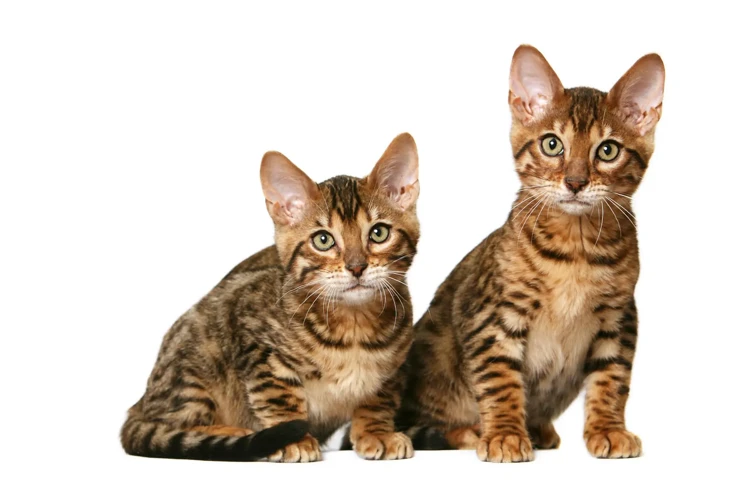
Once the breeding process is complete, responsible breeders must shift their focus to the crucial but often-overlooked aspect of post-natal care for both the mother cat and her kittens. This stage of the breeding journey involves providing the utmost care and attention to ensure the healthy development of the young ones and preparing them for their new homes. Along with the excitement of welcoming new additions to your feline family comes the added responsibility of providing ongoing support and guidance to the kittens’ potential adopters. In this section, we will discuss essential steps to take after the breeding process, from caring for the pregnant cat to finding suitable homes for the kittens.
Care and Attention for Pregnant Cats
When a cat becomes pregnant, it is crucial to provide her with proper care and attention to ensure that she and her kittens are healthy. Below is a table outlining key aspects of care and attention for pregnant cats:
| Aspect | Details |
|---|---|
| Nutrition | Pregnant cats require a diet that is high in calories and protein to support the growth and development of their kittens. It is recommended to feed them multiple small meals throughout the day rather than one or two large meals. Consult with a veterinarian to determine the best type and amount of food for your cat. |
| Exercise | Pregnant cats should have limited physical activity and avoid jumping or climbing. However, some gentle exercise such as walking or playing with toys is encouraged to keep them healthy and promote circulation. |
| Vet Visits | Regular vet visits during pregnancy are essential to monitor the cat’s health and ensure the kittens are developing properly. The vet may also provide additional supplements or recommend changes to the cat’s diet or exercise routine as needed. |
| Comfort | Pregnant cats should be provided with a comfortable and safe space to rest, away from any potential stressors. This can include a cozy bed, a quiet room, or a designated nesting area. |
| Behavior | During pregnancy, cats may become more affectionate or irritable due to hormonal changes. It is important to be patient and understanding of any changes in behavior, and to provide them with the affection and attention they need. |
By providing proper care and attention for pregnant cats, breeders can ensure the health and well-being of both the mother and her kittens, setting them up for a successful and happy life.
Post-Natal Care for Kittens
Once the kittens are born, it’s important to provide proper post-natal care to ensure their health and well-being. This includes things like proper hygiene, feeding, and monitoring of their growth and development. Here are some specific steps breeders can take:
| Step | Description |
| Keep the Area Clean | Keep the area where the kittens are staying clean and free from dirt and debris. This can help prevent the spread of germs and infections. |
| Ensure Proper Feeding | Make sure the kittens are nursing properly and getting enough milk from their mother. If necessary, supplement with additional formula to ensure their nutritional needs are met. |
| Monitor Weight and Growth | Weigh the kittens regularly to make sure they are gaining weight and growing properly. This can help identify any potential health issues early on. |
| Check for Any Health Issues | Keep an eye out for any signs of illness or distress in the kittens, such as vomiting, diarrhea, lethargy, or difficulty breathing. |
| Socialize and Interact with Kittens | Handle the kittens regularly to help them get used to human touch and interaction. This can make them more sociable and friendly as they grow older. |
| Schedule Veterinary Check-Ups | Take the kittens to the vet for regular check-ups and vaccinations. This can help prevent diseases and catch any health issues early on. |
By following these post-natal care practices, breeders can help ensure their California Spangled kittens are healthy and happy as they grow and develop.
Socializing and Interacting with Kittens
The socialization and interaction process of kittens is crucial in fostering healthy, happy cats that can be great companions to their owners. To start with, kittens should be exposed to a variety of stimuli within their environment. This can include introducing them to different toys, sounds, and surfaces. Positive reinforcement should always be used during these interactions, as it helps the kitten build a positive association with new experiences.
Additionally, it is important for the kittens to have frequent positive interactions with humans. This can include gentle handling, playtime, and cuddling. These interactions should be supervised and monitored to ensure that the kittens are comfortable and not feeling stressed or overwhelmed.
Socialization with other animals is also important in ensuring that the kitten grows to be comfortable and confident around other pets. Introducing the kitten to other animals should be done gradually and in a controlled environment to minimize stress and anxiety.
Finally, it is essential to regularly provide proper care for the kittens, including vaccinations, deworming, and veterinary check-ups. This ensures that the kittens are healthy and well-cared for, helping them to thrive in their new homes.
Socializing and interacting with kittens is a process that requires patience and dedication. By exposing kittens to different stimuli, providing positive reinforcement, and fostering positive interactions with humans and other animals, kitten breeders can play a vital role in ensuring that the kittens grow into healthy, well-adjusted cats.
Marketing and Selling Kittens
As a responsible breeder, finding suitable homes for your California Spangled kittens is a critical step. Effective marketing and selling strategies can help you reach potential owners and ensure the success of your breeding program. However, it’s important to approach this process with care and caution, ensuring that the homes you choose are the right fit for your kittens and their new families. Let’s take a closer look at some key considerations when marketing and selling your California Spangled kittens.
Setting Realistic Prices
When it comes to setting prices for California Spangled kittens, it can be tempting to aim for the highest possible profit. However, responsible breeders prioritize finding suitable homes for their kittens over making a quick buck. This means setting realistic prices that reflect the quality of the kittens and the resources invested in breeding and raising them.
To determine a fair price for your kittens, consider factors such as their lineage, health, temperament, and physical attributes. A pedigree with a long line of champion ancestors can increase the value of a kitten, as can desirable physical traits like a rare coat pattern or eye color. However, if a kitten has underlying health issues or behavioral problems, it’s important to adjust the price accordingly and be transparent with potential buyers.
One way to gauge the market value of your kittens is to research prices of other California Spangled kittens for sale in your area or online. Keep in mind that pricing can vary based on factors like location, seasonality, and competition.
Once you’ve determined a price range for your kittens, consider offering discounts for certain buyers, such as repeat customers or those adopting multiple kittens. However, be sure to set clear boundaries and guidelines for discounts so that they don’t compromise the value of your kittens or compromise your own financial stability.
Ultimately, setting realistic prices for California Spangled kittens is about striking a balance between financial gain and ethical responsibility. By highlighting the unique qualities and traits of your kittens, while also being transparent about their needs and limitations, you can attract buyers who share your commitment to responsible breeding and animal welfare.
| Factors to Consider | Suggested Price Range |
|---|---|
| Pedigree and lineage | $1,500-$3,000 |
| Rare physical traits | $1,500-$3,500 |
| Health issues or behavioral problems | $500-$1,000 |
| Market demand and competition | $1,000-$2,500 |
Ensuring Suitable Homes for Kittens
One of the most important responsibilities of a responsible breeder is ensuring suitable homes for kittens. These little furballs need a comfortable and loving environment where they can thrive and grow.
To ensure suitable homes for your kittens, here are some steps you can follow:
- Screen Potential Adopters: Before selling your kittens, make sure to screen potential adopters. Meet them in person, ask them relevant questions, and get a feel for their personality and lifestyle. A suitable home for a California Spangled Cat should have plenty of space for play and exercise, be safe and secured, and have an environment that is conducive to the cat’s natural behavior and instincts.
- Provide Information on Care: When you sell your kittens, provide detailed information on how to care for them. This includes their nutritional needs, exercise routines, grooming requirements, and behavior training. Giving adopters comprehensive guidelines on how to take care of their new kitten ensures that they have the knowledge and resources to raise a happy, healthy cat.
- Check In with Adopters: After you’ve sold a kitten, it’s important to check in with the adopter regularly to make sure that the kitten is adjusting to their new home and that their needs are being met. You can provide guidance on any issues that arise and answer any questions the adopter may have.
- Create an Adoption Contract: An adoption contract is a legal document that outlines the terms and conditions of the adoption. It covers things such as the kitten’s health status, any medical treatments they’ve received, and the obligations of the adopter to provide proper care. By creating an adoption contract, you can ensure that the adopter takes their responsibilities seriously and that the kitten remains in a suitable home.
By following these steps, you can ensure that your kittens go to suitable homes where they will receive the love and care they need to thrive. Remember, as a responsible breeder, you have a duty to provide your kittens with the best possible start in life.
Creating an Adoption Contract
When it comes to responsible breeding practices for California Spangled Cats, creating an adoption contract is a crucial step in ensuring that the kittens end up in safe and loving homes. Here are some key considerations for creating an adoption contract:
- Include mandatory spaying/neutering: To prevent unwanted litters and promote responsible pet ownership, it’s recommended to include a clause in the adoption contract that requires the new owner to spay or neuter the kitten within a certain timeframe.
- Specify care and living arrangements: The adoption contract should clearly outline the type of care and living arrangements that the kitten will be provided, such as indoor-only living or access to a secure outdoor area. This helps ensure that the kitten will live in a safe and healthy environment.
- Set expectations for veterinary care: It’s important to specify in the adoption contract the type of veterinary care the kitten will receive, such as regular check-ups, vaccinations, and emergency care if needed.
- Include a return policy: Sometimes circumstances change and a new owner may not be able to keep the kitten. In such cases, it’s helpful to have a return policy in place that outlines the process for returning the kitten to the breeder.
- Specify any additional requirements or restrictions: Depending on the breeder’s preferences, there may be additional requirements or restrictions that need to be included in the adoption contract. For example, a breeder may require that the kitten not be declawed or that the kitten must be kept as an indoor cat.
By creating a comprehensive adoption contract, breeders can help ensure that their kittens are placed in safe and loving homes with responsible owners who will provide them with the care they need to thrive.
Conclusion
In conclusion, responsible breeding practices for California Spangled cats are critical to ensure the health and well-being of the breed and its offspring. Breeders must prioritize the health of their cats and kittens by conducting health testing and screenings, choosing suitable mating partners, providing proper nutrition and exercise, monitoring and supervising during the breeding process, and providing adequate post-natal care for kittens.
Irresponsible breeding practices can have severe consequences for the breed and its future. Breeding cats without proper health screenings can result in genetic disorders being passed down to the offspring, and inbreeding can lead to weakened immune systems and higher risk of health issues.
Furthermore, it is essential to prioritize the socialization and interaction of kittens to ensure they are well-adjusted and prepared for their new homes. Setting realistic prices and ensuring suitable homes for kittens is also essential to prevent them from being sold to unsuitable owners or ending up in shelters.
In essence, responsible breeding practices require dedication and commitment to produce healthy, happy, and well-socialized California Spangled cats. By following these practices, breeders can contribute to the betterment of the breed while protecting its future.
Frequently Asked Questions
What is a California Spangled Cat?
A California Spangled Cat is a breed of domestic cat that was developed in the 1980s to resemble wildcats. They have a striking appearance with a muscular and athletic build, short coat with spotted markings, and almond-shaped eyes.
What makes responsible breeding important for California Spangled Cats?
Responsible breeding is important for all cats in order to ensure their health, well-being, and to prevent genetic issues. For California Spangled Cats, responsible breeding also helps to preserve the unique qualities of the breed and prevent it from becoming extinct.
What are some benefits of responsible breeding?
Benefits of responsible breeding include healthier cats with fewer genetic issues, higher-quality kittens, and a better reputation for the breeder and breed overall. Responsible breeding can help to prevent overpopulation and reduce the number of cats in shelters.
What are some consequences of irresponsible breeding?
Irresponsible breeding can lead to a range of negative consequences, including health issues in cats and kittens, inbreeding and genetic abnormalities, overpopulation and overcrowded shelters, and a poor reputation for the breeder and breed.
What should be considered when preparing for breeding?
When preparing for breeding, it’s important to consider factors such as the health of the cats, their temperament and behavior, their lineage and genetics, and their nutritional needs. Breeder should also ensure that they have the necessary resources and expertise to care for the cats and kittens.
What is health testing and screening?
Health testing and screening is the process of evaluating the health of cats prior to breeding. This can include genetic testing, blood tests, X-rays, and other types of diagnostic tests to identify any health issues or potential genetic abnormalities.
What should be considered when choosing suitable mating partners?
When choosing suitable mating partners, breeders should consider factors such as the cats’ temperament, behavior, and physical characteristics. They should also analyze their pedigree, lineage, and bloodlines to determine if there are any potential genetic issues that could arise.
What is natural mating versus artificial insemination?
Natural mating involves allowing the cats to mate naturally without human intervention, while artificial insemination involves manually inseminating the female cat with sperm from the male. Both methods have their own set of benefits and drawbacks, but artificial insemination can be useful for preventing the spread of contagious diseases and allowing for more control over the breeding process.
What is contingency planning?
Contingency planning involves creating a plan for how to handle various situations that may arise during the breeding process. This may include unexpected health issues with the cats or kittens, difficulties with delivery, or loss of the mother.
What should be included in an adoption contract?
An adoption contract should include details such as the terms of the adoption, any costs or fees associated with adoption, the responsibilities of the adopter, and any requirements for ongoing care and veterinary visits. It should also include information about returning the cat if necessary or if there are any issues with the adoption.

